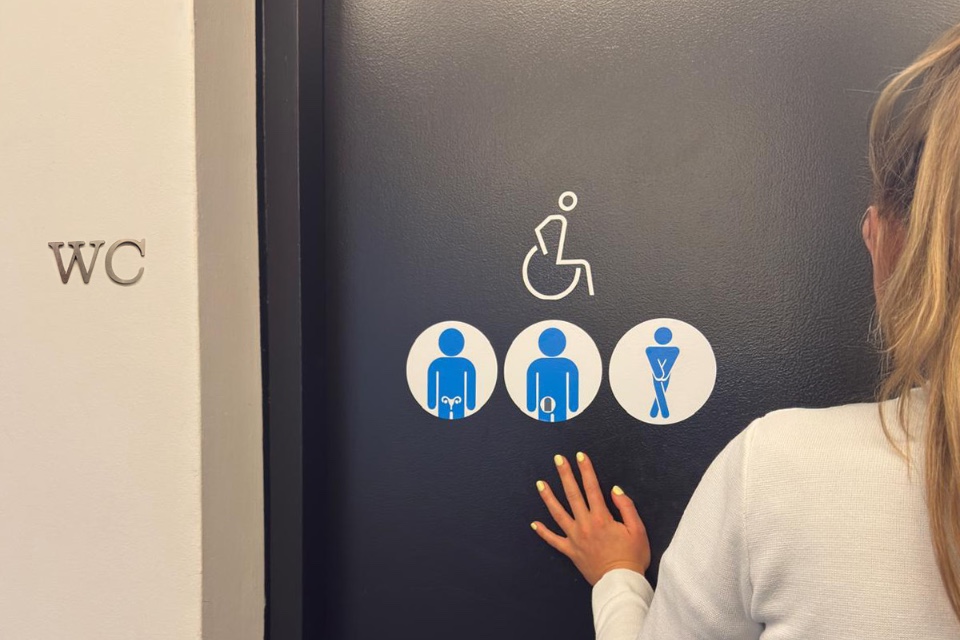Almost four in ten Brits with hidden disabilities (37%) say they have been challenged when attempting to use accessible (disabled toilets) washrooms, with many being told they do not look ‘disabled enough’ according to shocking new research released today. It is a worryingly regular occurrence, with seven in ten (70%) saying it happens at least once a month.
The new research commissioned by Initial Washroom Hygiene, amongst 500 UK adults with long-term health conditions, impairments, or disabilities who need to use accessible washrooms, revealed some shocking results. Over a third (35%) of all people with disabilities have faced negative reactions or been scrutinised by other members of the public when trying to use these essential facilities.
Amongst them, the most common challenges they faced from other members of the public include disapproving stares (69%), verbal challenges regarding their right to use the space (46%), with 49% even being told they ‘don’t look disabled’ .
This has a strong impact on many people with hidden disabilities that need to use accessible washrooms, leaving them feeling stressed (45%), upset (45%), and frustrated (41%).
A lack of understanding appears to be to blame, with accessible washrooms often assumed to be only for those with visible mobility challenges, which might largely be due to the use of the wheelchair symbol on signage. Indeed half of people with disabilities (53%) feel that accessible washrooms need better signage to communicate that they are for people with all types of disability.
A fifth of the respondents (18%) feel that the public are unaware of the various reasons someone might need to use an accessible washroom. However, many people with invisible conditions such as, chronic pain, autism, Crohn’s disease, multiple sclerosis, anxiety, or those living with stoma bags will often need to use an accessible washroom.
To help address this, Initial Washroom Hygiene has introduced six new signs that businesses can use to raise awareness of the wide range of disabilities or long-term health conditions that may mean a person needs to use an accessible washroom.
Even for those that are able to get into the accessible washrooms they need to use without stares or verbal challenges, many then find the facilities themselves are not up to standard. Over a quarter of respondents (26%) said they were dissatisfied with the accessible washrooms they use. Key issues include the absence of soap (60%), lack of waste bins (68%), no alarm cords (40%), limited waste disposal options (36%), and vending machines that are out of reach (38%) or difficult to use (23%).
More than half of respondents (63%) also believe accessible washrooms don’t adequately cater to all needs, with mental health issues (32%), mobility impairments (28%), visual impairments (21%), hearing impairments (21%), and incontinence (21%) commonly cited as being overlooked.
While emotional struggles are a significant part of the experience, the practical challenges are equally troubling. Over half of disabled Brits (54%) often encounter locked accessible washrooms, forcing them to ask for a key, while almost three quarters (72%) have struggled to find an accessible washroom and 70% have avoided certain locations due to uncertainty about available facilities.
In light of these findings, Initial Washroom Hygiene is calling on businesses, public spaces, and policymakers to take action to better accommodate individuals with hidden disabilities or long-term health conditions.
Jamie Woodhall, UK Technical & Innovations Manager at Initial Washroom Hygiene, said: “All too often, individuals with hidden disabilities are made to feel unwelcome or scrutinised when trying to use accessible washrooms. Our research highlights a stark reality, that people with invisible conditions, from chronic pain to mental health challenges, rely on these facilities just as much as those with visible mobility issues.
“Everyone deserves a dignified washroom experience, and by introducing more inclusive signage, we can help ensure that accessible washrooms are recognised for what they truly are: spaces for everyone. It’s crucial that public spaces and businesses adopt clearer signage to raise awareness, reduce stigma, and make sure that all individuals,regardless of the visibility of their disability or long-term health condition can access the facilities they need without fear of judgement or discomfort.”






